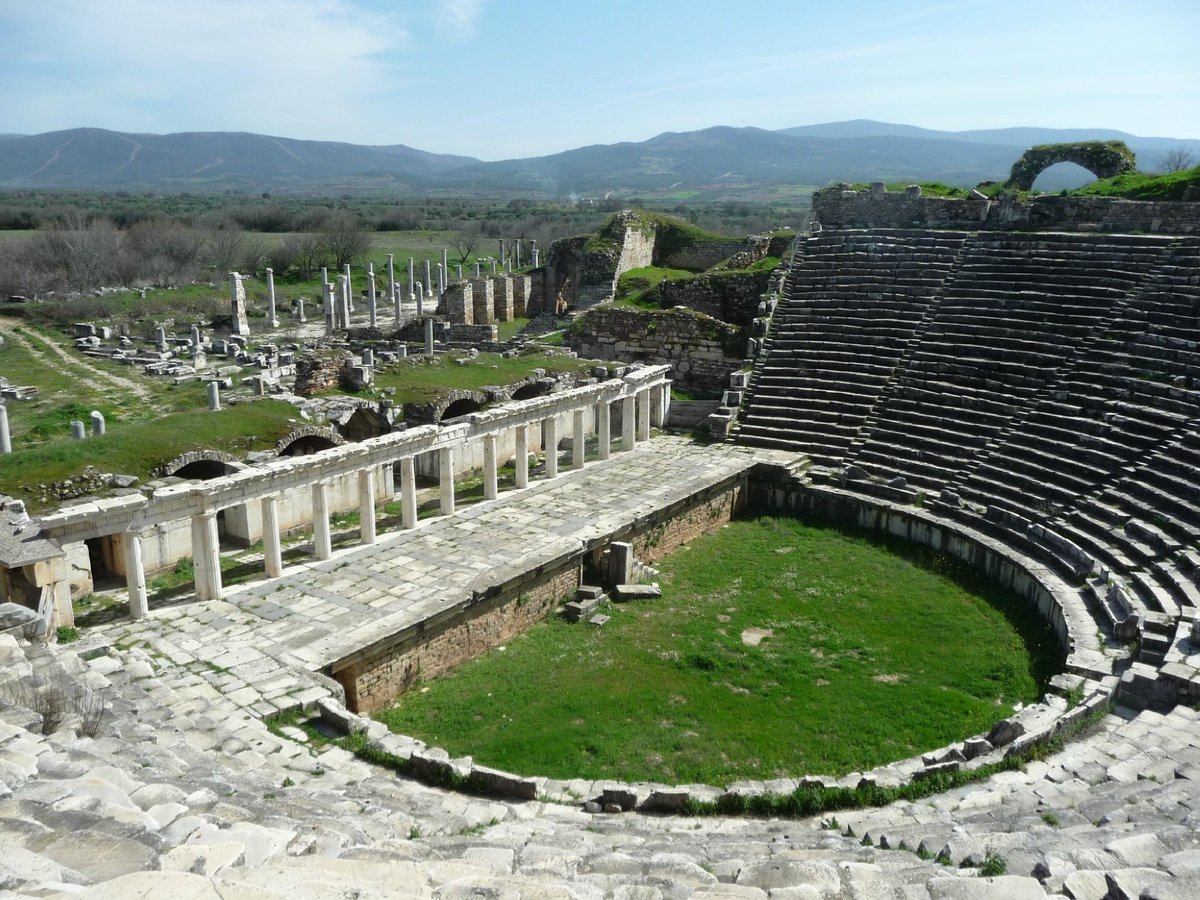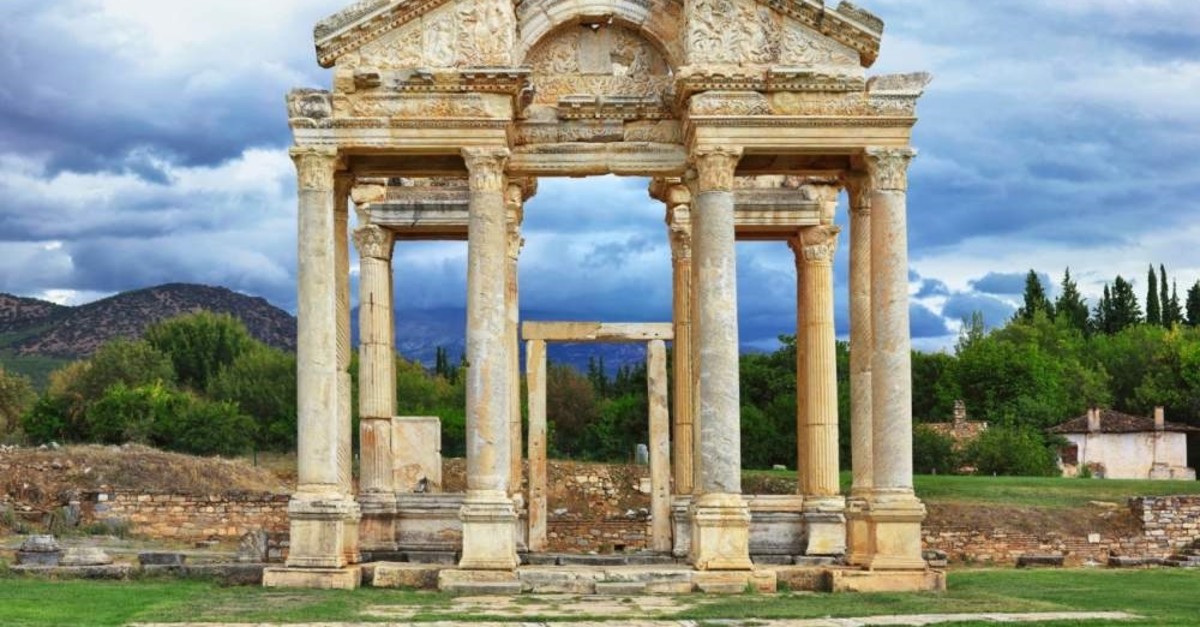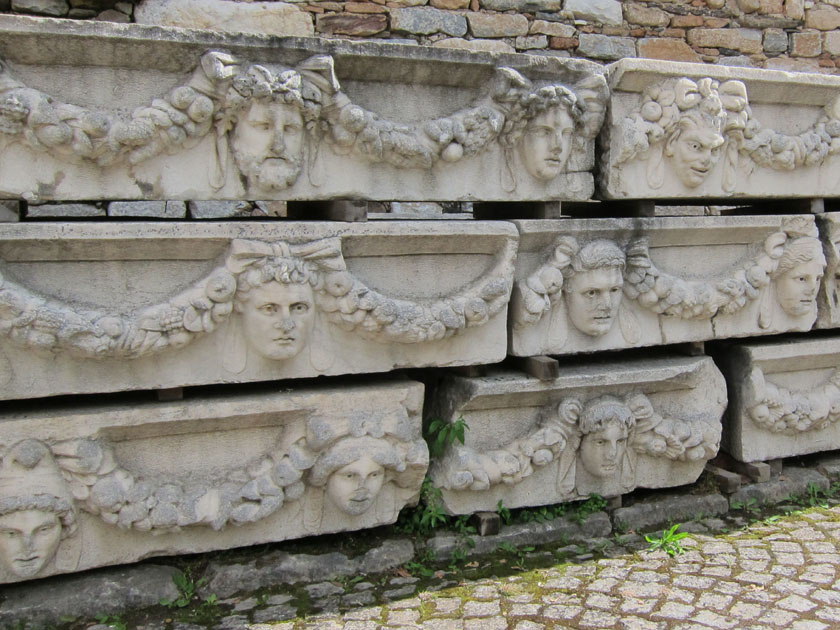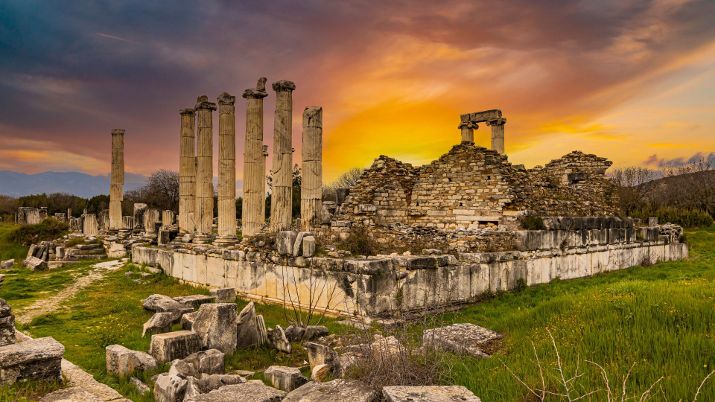Introduction
Aphrodisias, located in southwestern Turkey, stands as one of the most significant ancient cities, renowned for its remarkable art, architecture, and urban planning. The site comprises two primary elements: the archaeological remains of the city and the marble quarries northeast of the city that fueled its artistic and economic prosperity.

Temple of Aphrodite: Cultural and Religious Hub
The Temple of Aphrodite, constructed in the 3rd century BCE, was central to the city’s religious life. It became a symbol of Aphrodisias’ cultural and spiritual identity, reflecting the deep connection between the city’s residents and the goddess of love. Over time, the temple was transformed into a Christian basilica, highlighting the city’s ability to adapt to shifting religious trends.

Marble Quarries: Birthplace of Artistic Masterpieces
Aphrodisias thrived due to its marble quarries, which supplied the raw material for the city’s famous sculptors. These artisans crafted exquisite statues, reliefs, and sarcophagi that were prized across the Roman Empire. The quarries were integral to the city’s artistic and economic success, cementing its place as a major center for sculpture in antiquity.

Roman Urban Planning and Civic Structures
The city’s Roman urban design is exemplified by its theatre, stadium, bath complexes, and agora. The theatre could hold 7,000 spectators, the stadium was one of the largest in the Roman world, and the bath complexes highlight Roman advances in engineering. These structures underscored the city’s architectural sophistication and its vibrant public life.
Cultural Legacy and Significance
Aphrodisias’ architectural and artistic achievements make it a valuable site for understanding Roman culture. Its marble sculptures and well-preserved civic structures provide insight into the daily life, social organization, and artistic practices of the time. Aphrodisias remains a testament to the lasting influence of ancient civilizations.

Conclusion
Aphrodisias is a symbol of the intersection of art, culture, and urban planning in the ancient world. From the Temple of Aphrodite to its marble quarries and grand civic buildings, the city’s legacy continues to fascinate and inspire.

